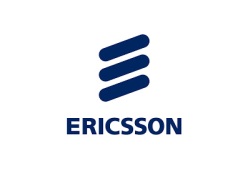In a new study with operator BT, Ericsson quantifies the benefits of network slicing for operators, when coupled with operational automation, as a smart investment to reduce operating expenditures and increase CAPEX efficiency, while enabling fast implementation and better utilisation of devices related to the Internet of Things (IoT).
Mobile data traffic continues to grow at a rapid pace along with adoption of connected devices. In the Ericsson Mobility Report, around 18 billion IoT devices are forecast by 2022. Connected IoT devices include connected cars, machines, metres, sensors, point-of-sales terminals, consumer electronics and wearables.
Network slicing allows operators to segment the network to support particular services and deploy multiple logical networks for different service types over one common infrastructure. The joint study looked at three ways to introduce new services into a network: via one multi-service network; via individual networks with dedicated resources; or via network slicing including operational automation.
Marielle Lindgren, head of Ericsson United Kingdom, says: “We found that over a five-year period, introducing new services by using network slicing and operational automation generated 35% more revenue than by using one multi-service network. The revenue increased 15% when compared to several networks with dedicated resources, demonstrating how the technology enables market stimulation, faster time to market, and opportunities from smaller niche services.”
Maria Cuevas, head of Mobile Core Networks Research at BT, says: “We’re positioned to bring millions of devices onto our networks as the IoT ecosystem grows. This study gives us guidance as to where our investments will achieve the best results. The more services we deploy with network slicing, the greater economic benefit we will see, enabling us to better serve our customers. In order to achieve this vision, it is important that the industry provides cost-effective solutions to support end-to-end orchestration and adds automation to the operations and management of network slices.”
1-2-3 to save, grow and contribute
Specifically, the study’s base case was a deployment ramping up to 40 annual service launches over five years. Network slicing resulted in the equivalent of 40% reduction in OPEX, 35% increase in revenue potential and an overall impact of 150% increased economic benefit, under the baseline assumptions made. When scaled up, the gains also increased. All benefits were considered in terms of the core network only.
Marielle Lindgren, continues: “As applications and use cases for evolving technology become more complex, so will the characteristics of connecting them. Simply put, networks will need to adapt. The findings clearly show that network slicing provides a logical setup that can be tailored to extend into the as-yet undefined services of the future.”
Comment on this article below or via Twitter: @ VanillaPlus OR @jcvplus






